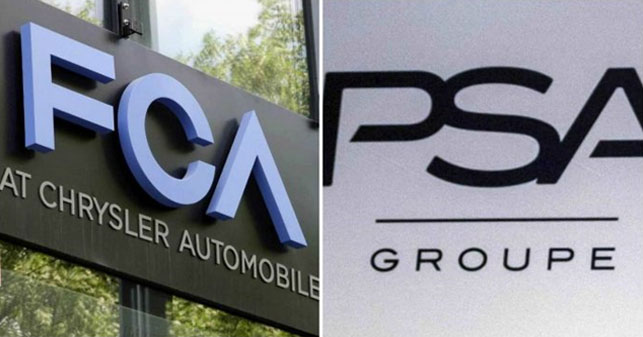Sergio Marchionne’s dream comes true. For more than a decade, the global icon of the Italian car industry had been looking for a partner for the Italian-American group. Back in 2014, the Italian-Canadian businessman stated, “the auto industry is too fragmented and the capital needed to keep it going is excessive, uneconomic.” The spasmodic search for a worthy right-hand man has finally hit the mark: after the Italian company’s divorce from General Motors, Fiat Chrysler Automobiles N.V. and Peugeot S.A.tied the knot at the dawn of 2021, creating a ‘baby Stellantis‘. The name of choice is not accidental. It’s a symbolic reference to the cradle of civilisation, the Eternal City, and with the intention of paying tribute to their respective origins, the two founding companies opted for “Stellantis“, from the Latin verb “stello” meaning “to be illuminated with stars“.
Like if the planets aligned, the two brands are thus reunited under the same sky. But, rest assured, there will be no cars with the Stellantis logo, which will be reserved exclusively as a Corporate Brand, while the respective pre-existing names and logos will remain unchanged.
In the merger, the Agnelli family set one condition: dilute the shareholding, but retain a strong position in the new group. With a background of more than 8.7 million cars sold and a workforce of more than 400,000 employees, the new group is positioned as the world’s fourth largest car manufacturer. The goal is a turnover of over 200 billion euros and they aim to achieve the 10 million cars produced per year milestone very soon. On board the new venture will be Fiat and Chrysler, Peugeot and Citroën (to name a few) and the base of operations will be the Netherlands. The shares will boast a triple listing, on the Euronext in Paris, the Borsa Italiana in Milan and at the centre of Wall Street, on the New York Stock Exchange.
According to the group’s press release: “The proposed combination will create a leading group with the team, skills, resources and size to successfully capture the opportunities offered by this new era of sustainable mobility”. Commenting on the long-awaited signing of the agreement, the future Chief Executive Officer (CEO) of the new group, Carlos Taveres, said: “This merger represents a great opportunity to achieve an even stronger position in the industry through our commitment to lead the transformation to a world of green, safe and sustainable mobility and to offer our customers excellent products, technologies and services. I am fully convinced that with their immense talent and collaborative approach, our teams will be able to maximise performance with energy and enthusiasm”. There was no shortage of criticism. Some saw in the manoeuvre a serious conjecture aimed at taking advantage of the current emergency period. Without batting an eyelid, the Portuguese businessman specified that the Italian-American merger would not benefit from the crisis, but would be a way of making the car market stronger. He reiterated: ‘We are not merging in a crisis situation. We are doing it because we believe that we will be stronger in facing the challenges of the future of the sector. These are two companies in great shape, with high profitability and visible growth”.
John Philip Jacob Elkann, born in 1976, is in direct charge of the Stellantis agreement. He is well known for having kept the family business afloat back in 2004. He signed the agreement.

Mike Manley, CEO of Fiat Chrysler Automobiles (FCA), also made the following comments: “This is the union of two companies with incredible brands and passionate, competent people. Both have faced extremely difficult times and have come out of them even more agile, intelligent and formidable. Our people have one thing in common – they look at challenges as opportunities to be seized because they are the way to make us even better at what we do”.
Stellantis creates a win-win situation, in response to the need to survive the revolution in the car industry that is taking place at the moment: new types of mobility, electric motors and self-driving cars.
Fiat brings America to Peugeot’s dowry, including Jeep models and American brands; also significant is the magical “Fiat 500” brand, a worldwide symbol of Italy, which after a sparkling comeback in 2007 (the year of the 50th birthday of the iconic ancestor “FIAT Nuova 500”), has continued to be chosen by motorists, without losing market share, even with the electric model launched in 2020.
Peugeot’s dowry is also significant, bringing with it innovative electric platforms (on which Fiat had lately slowed down) and Germany’s Adam Opel GmbH, acquired in 2017.
The promise is that no plant across the globe will be closed. The challenge is not easy, as the two companies will have to save almost 5 billion a year. How? By avoiding unnecessary duplication, and by bringing the marketing and strategy workforce together.
“It is a historic moment“, concludes Carlos Tavares, “with emotion and great excitement, we are kicking off this project, which has two pillars: protecting workers and guaranteeing the future of the company“




